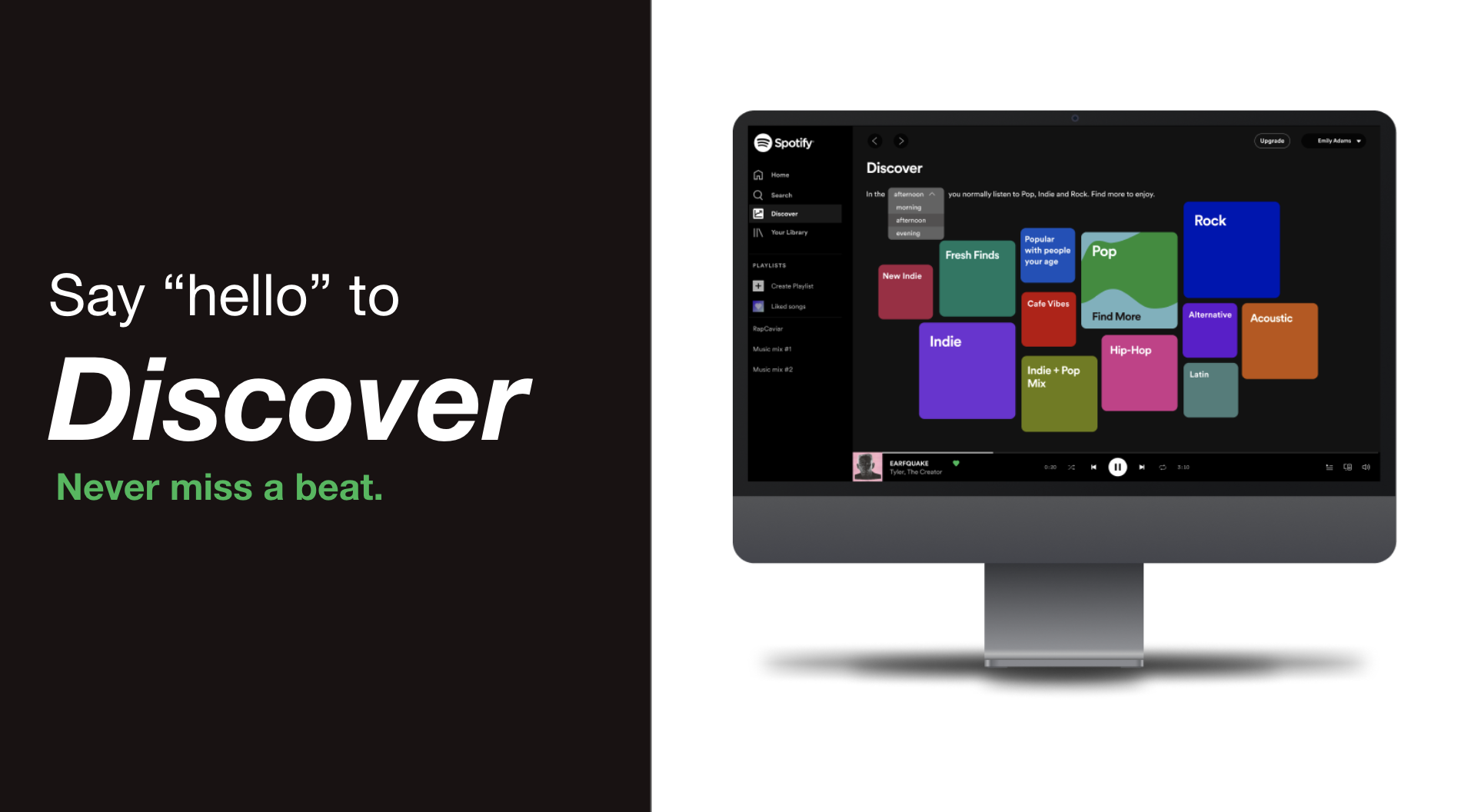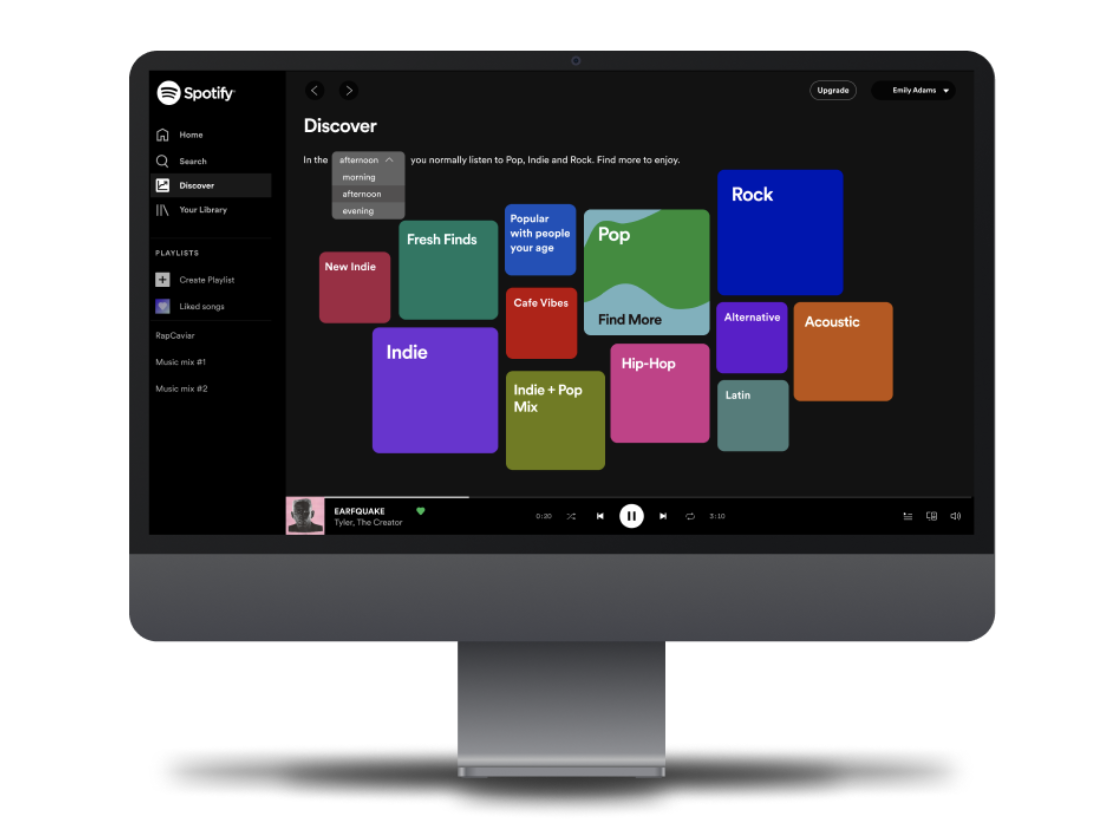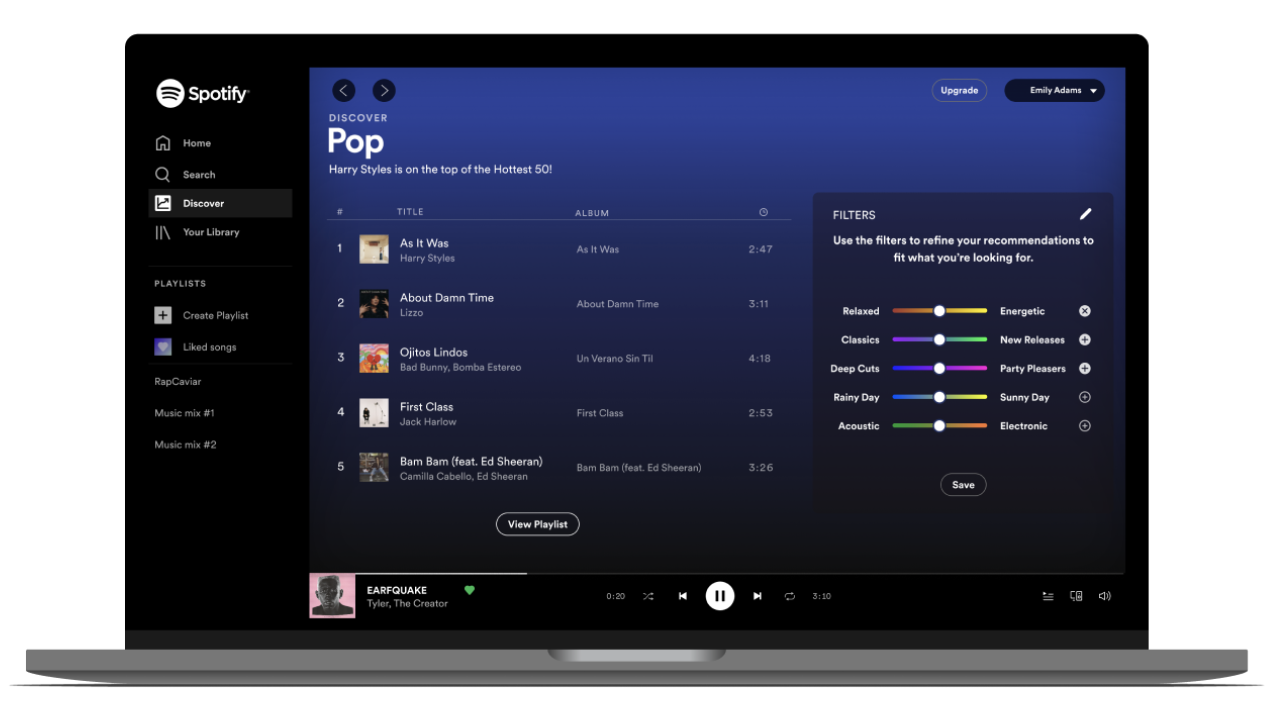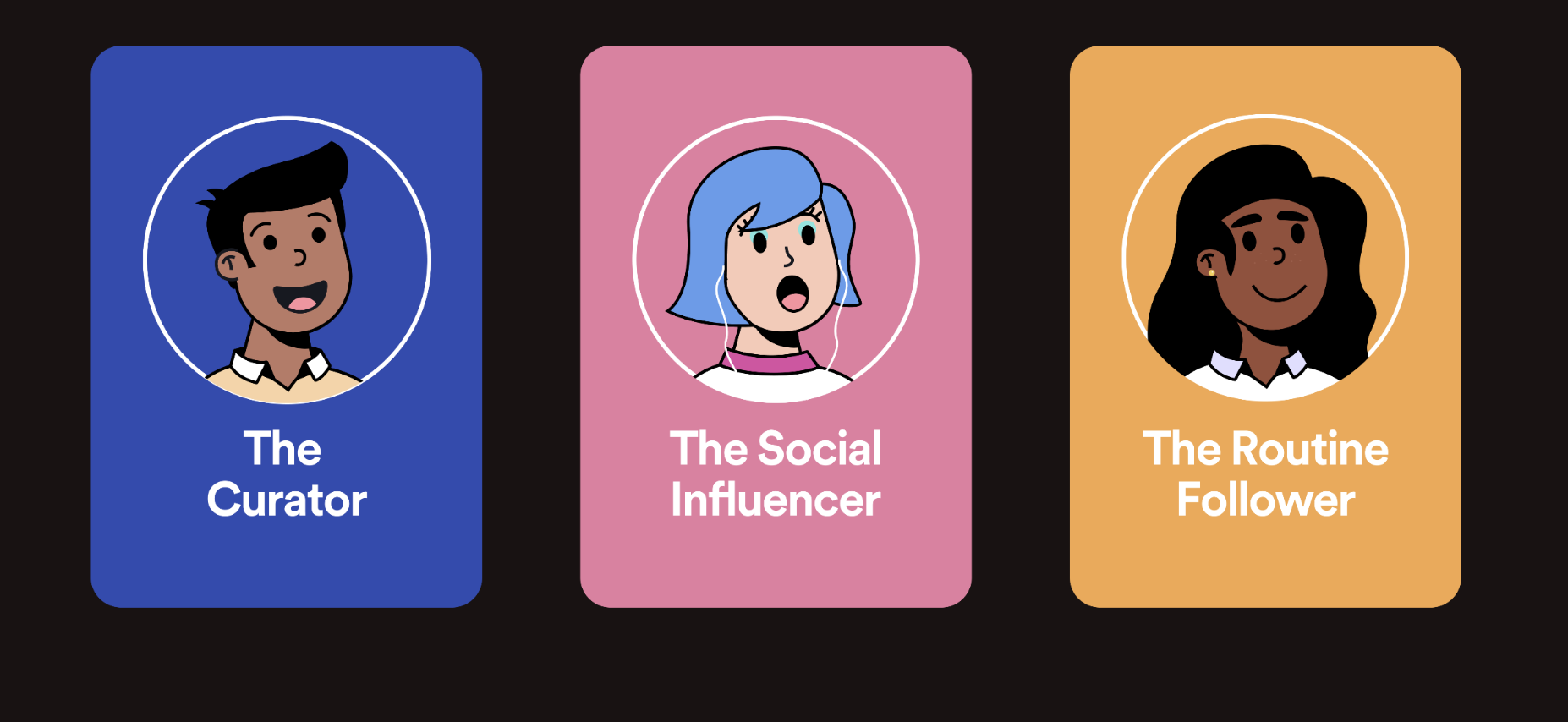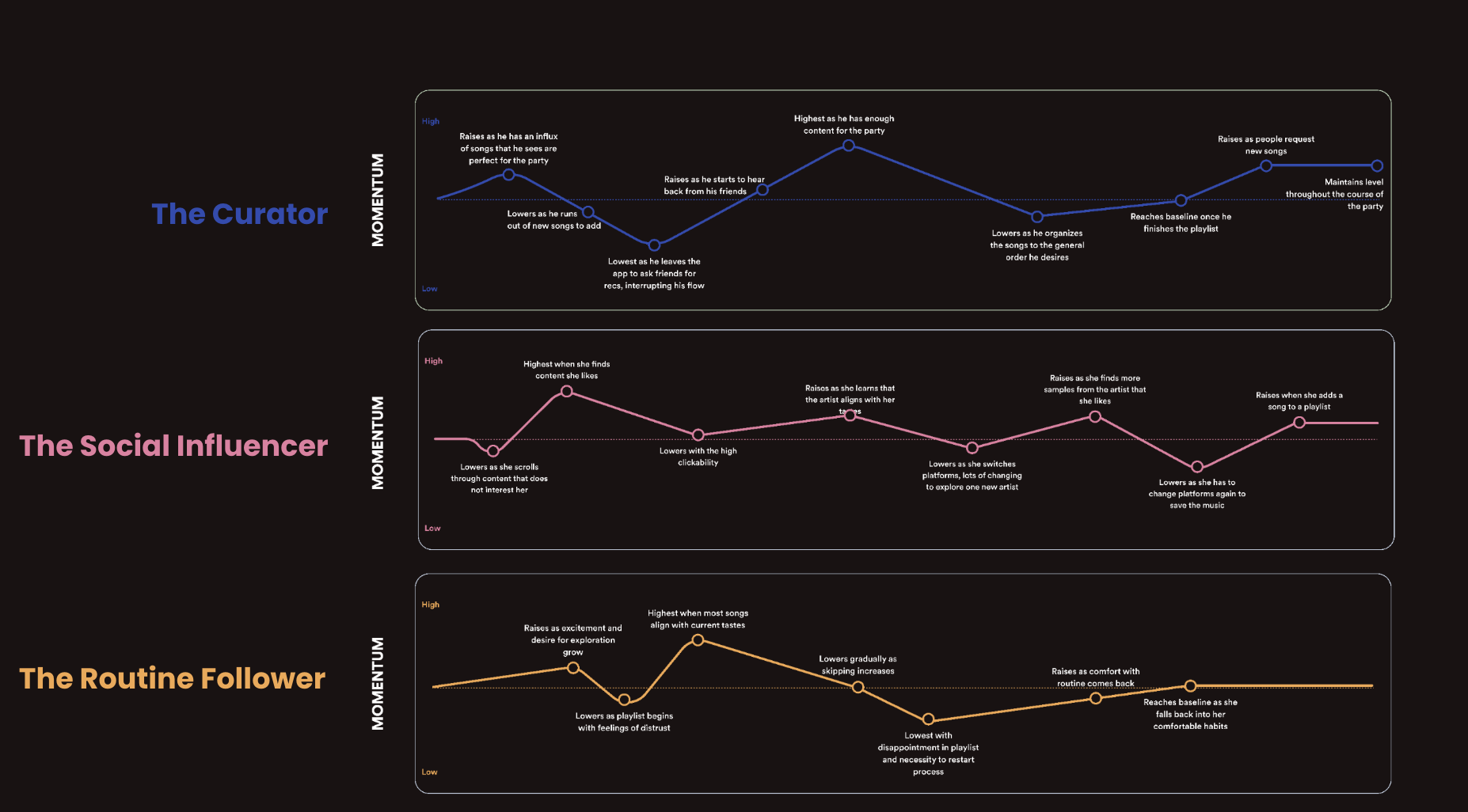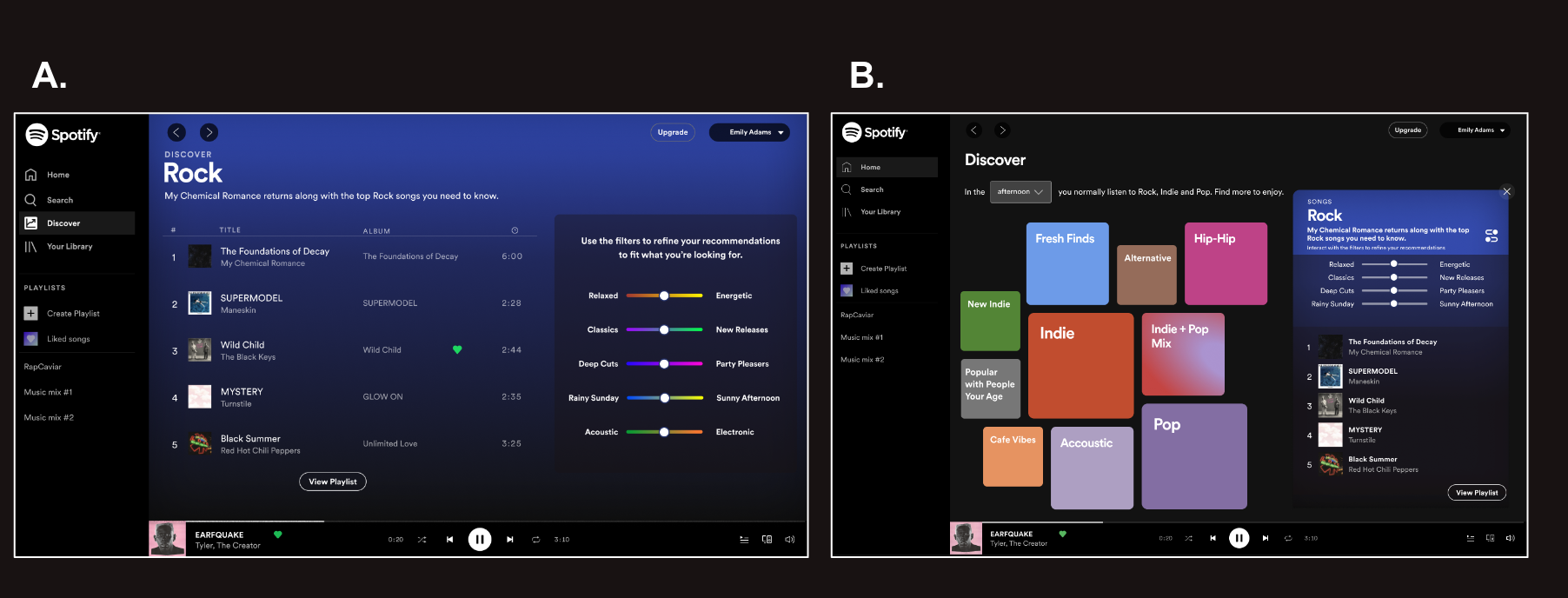Spotify Capstone project
JAN - JUN 2022 | AWARDED EXCELLENCE IN RESEARCH UNDERGRADUATE COHORT
About
The Spotify Edison Web Team tasked us to understand college student and their audio streaming habits and experiences in order to find an opportunity for Spotify to increase their presence on web.
TASK
Since I found this project myself and already planned the project, I decided to focus the planning quarter for research. To narrow down the scope, I decided it would be best to understand how college students used Spotify. I sent out an exploratory survey, to understand how they use and explored music. From 141 survey responses, and 5 semi-structured interview to dig in deeper into the experience we learned…
Participants like recommended and personalized music playlists. They like the discovery aspect/features it has. As well as Spotify wrapped.
Algorithms don't introduce new music to participants, or if it does the music can be weird or not liked by participants.
Participants use Spotify on different platforms and occasions, so they discover music in different ways.
Since I learned participants used Spotify daily, I knew a doing a diary study will give us more insights into how they listen to music and find new music. The diary study would allow participants to reflect on the music on a daily basis, instead of trying to recall opportunities where they found new music. As well as opportunities for me to find patterns and behaviors across a 3 to 4 day span. From the diary study we were able to learn more about our participants behaviors and actions on Spotify, to then focus on a design question.
How might we create a music discovery process that is more personalized, playful, and builds on Spotify's history of innovative features?
From this we were also able to gather all our research data to create personas and journey maps. This helped us focus in on our different user groups as we come up to design a concept.
Methods
My designers created low-fidelity mocks using what we knew from research. Since we still were unsure and wanted more inspiration I decided we should do a co-design session with our user group. I presented the design question to participants and asked what they would do, because designing isn’t natural to them I helped guide them and pulled from what they talked about. After the session, I showed them our mocks and designed further with them to share our ideas and combine different concepts. After this iteration from the session we created a medium fidelity mocks, where we then ran a concept test on to see how participants liked the design and if they were able to navigate the UI. From that we learned participants wanted more customization, so we created two different designs and assessed an A/B unmoderated test to quickly gather feedback due to timeline. This was helpful since we were able to get feedback by the end of the day to create our last milestone and final design.
Since the project was wrapping up, I decided to do a usability test to test our final design and use this as a chance of reflection of what we would do or change if given more time.
Result
We decided to create Discover never miss a beat with titles on the discovery page to help users narrow down a genre of music they want to listen to. The bigger the tile, it represented what genre you more frequently listen to. Along with a recommendation based on the time of day, since users choose different types of music depending on the time and mood.
From that screen you would move onto a customizable playlist where you can remove songs, and also use sliders to more narrow down your customization. You could also add more slider descriptions, depending on whether or not you want to deepen your engagement.
Capstone Background
University of Washington's Human Centered Design & Engineering department offers capstone classes to both undergraduate and graduate level students as a culminating experience that synthesizes materials learned across all courses within their degree program.
HCDE capstones provide the opportunity for UW students and industry partners to work together to address real-world issues using human-centered design and engineering. Capstone projects are student-run, large-scale projects that encompass two quarters of student work. Projects should touch on at least two components of the human-centered design: user research, ideation, prototyping, and evaluation. Occasionally, students engage in implementation as well, depending on student background.
team
Britnie Chin UX Researcher & Project Manager
Dena Sabha UX Designer
Kerry Horton UX Designer
Monica Ionescu UX Designer
Duration
January 2022 - June 2022
Low-Fidelity Mocks
Medium Fidelity Mocks
A/B Testing
